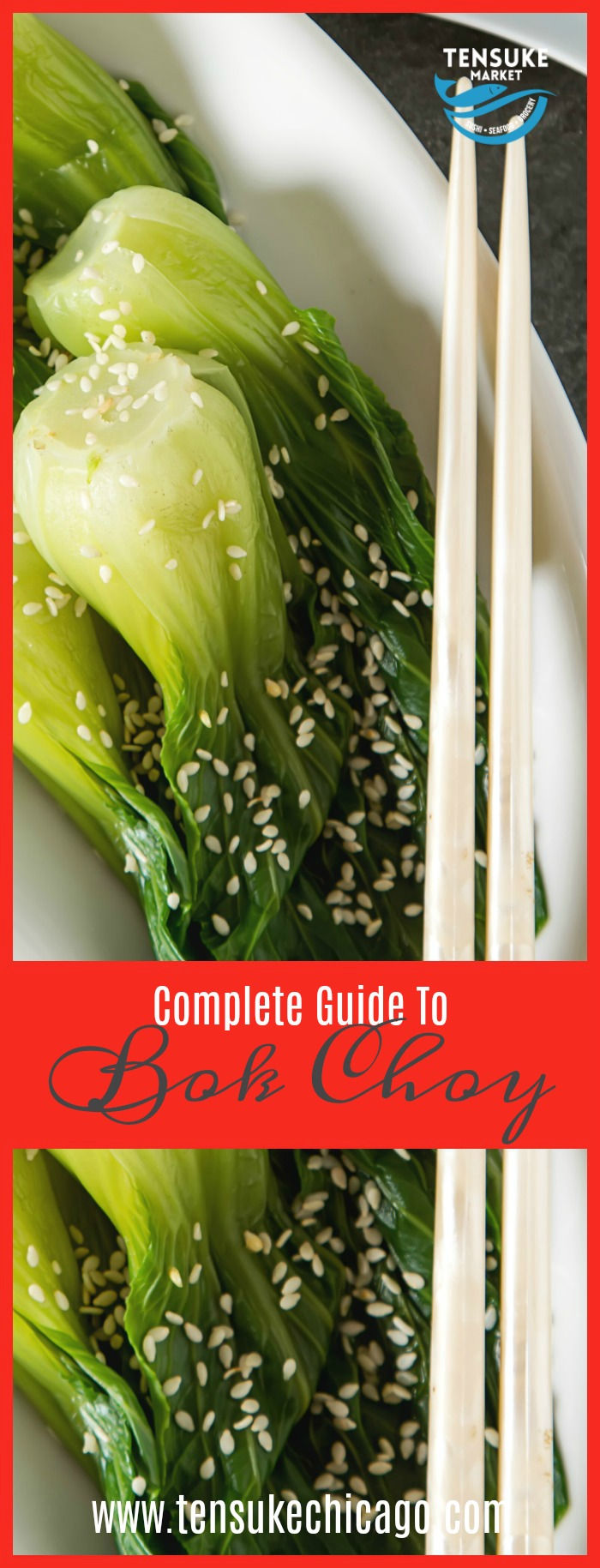Complete Guide To Bok Choy
- Tensuke Market
- Apr 2, 2018
- 2 min read
A deep green leafy vegetable that resembles Romaine lettuce on top and a large celery on the bottom, bok choy is a crucifer more closely related to cabbage.

Botanical name: Brassica campestris
BOK CHOY NUTRITION FACTS
Cultivated in China for centuries, bok choy has played a large part not only in its cuisine, but in traditional Chinese medicine. Today, it’s a staple in both Asian and American recipes.
A deep green leafy vegetable that resembles Romaine lettuce on top and a large celery on the bottom, bok choy is a crucifer more closely related to cabbage. The entire vegetable can be used, and is often added raw to salads for a satisfying crunch. In soups, the leaves and stalks should be chopped and added separately, since the stalks take longer to cook.
Bok choy can also be steamed or boiled, but the stir fry method of cooking seems to release the best flavors. Kimchee is the Korean name for pickled bok choy. When shredded, it makes great coleslaw. An alternate take: try bok choy sautéed with ginger and garlic. All these are ideal methods of preparation for a ready-made food that also happens to be loaded with life-giving nutrients.
SHOPPING
When you are shopping for bok choy, you want them to look nice and fresh and vibrant and try to avoid any that look wilted or rubbery on the bottom, you want them to look nice and crisp and healthy.
STORING
Once you have them home, just make sure they are wrapped tightly in plastic bag, (the one from the grocery store is perfect), with as little air as possible. This should last in your veggie drawer for at least 5 days.
PREPARATION
When you are ready to work with your bok chop start by giving it a good rinse under some cold water.
For the fully grown boy chop, I treat it the same way I do celery. Cut off the root end and then run the stalks under cold water, being sure to wash the leafy tops as well.





Weston McKennie, gelandang asal Amerika Serikat, mengalami transformasi fisik signifikan sejak bergabung kembali dengan Juventus. weston mckennie
HI BEST PUNE // HI REAL CITY PUNE // HI GREAT CITY IN PUNE // HI AIRPORTS PUNE //
HI BN PUNE // HI PUNE ESCORTS // HI HOTEL IN PUNE // HI BEST CITY IN PUNE //
HI PIMPRI PUNE // HI KOREGAON PARK // HI HINJEWADI PUNE // HI DECCAN PUNE //
HI BALEWADI PUNE // HI BANER PUNE // HI WAKAD PUNE // HI VIMAN NAGAR PUNE //
HI SHIVAJI NAGAR PUNE // HI RAVET PUNE // HI city PUNE // HI CITY IN PUNE ///
HI PUNE GREAT CITY // HI LOVELY DESIRE // Best In Pune // the royel city pune
raja168, slot gacor, situs slot, slot, slot gacor, raja168, slot gacor, slot, slot gacor,
raja168, slot deposit qris, slot gacor, situs toto, slot gacor, raja168, situs slot, slot gacor, slot gacor,
slot gacor, raja168, raja168, raja168,